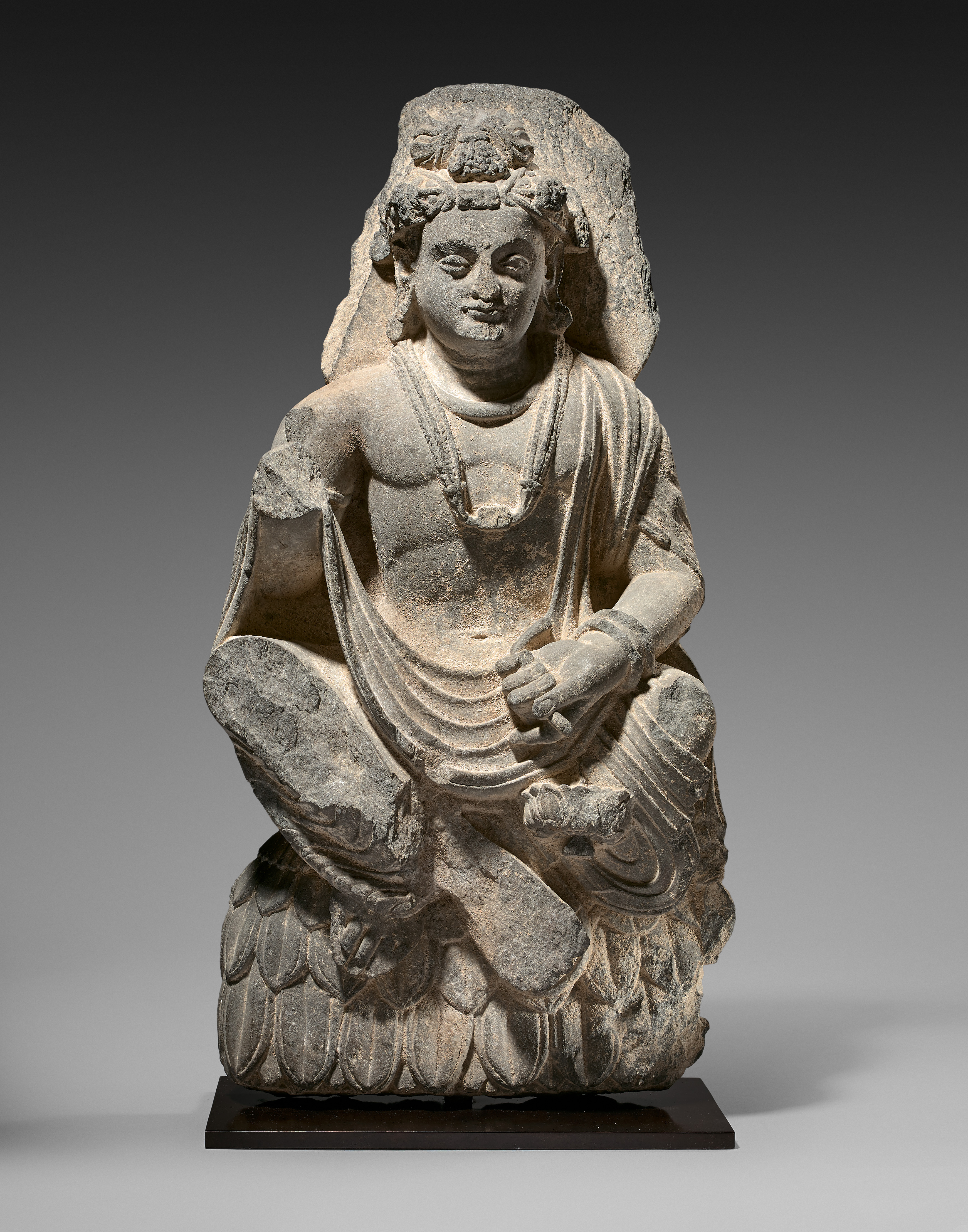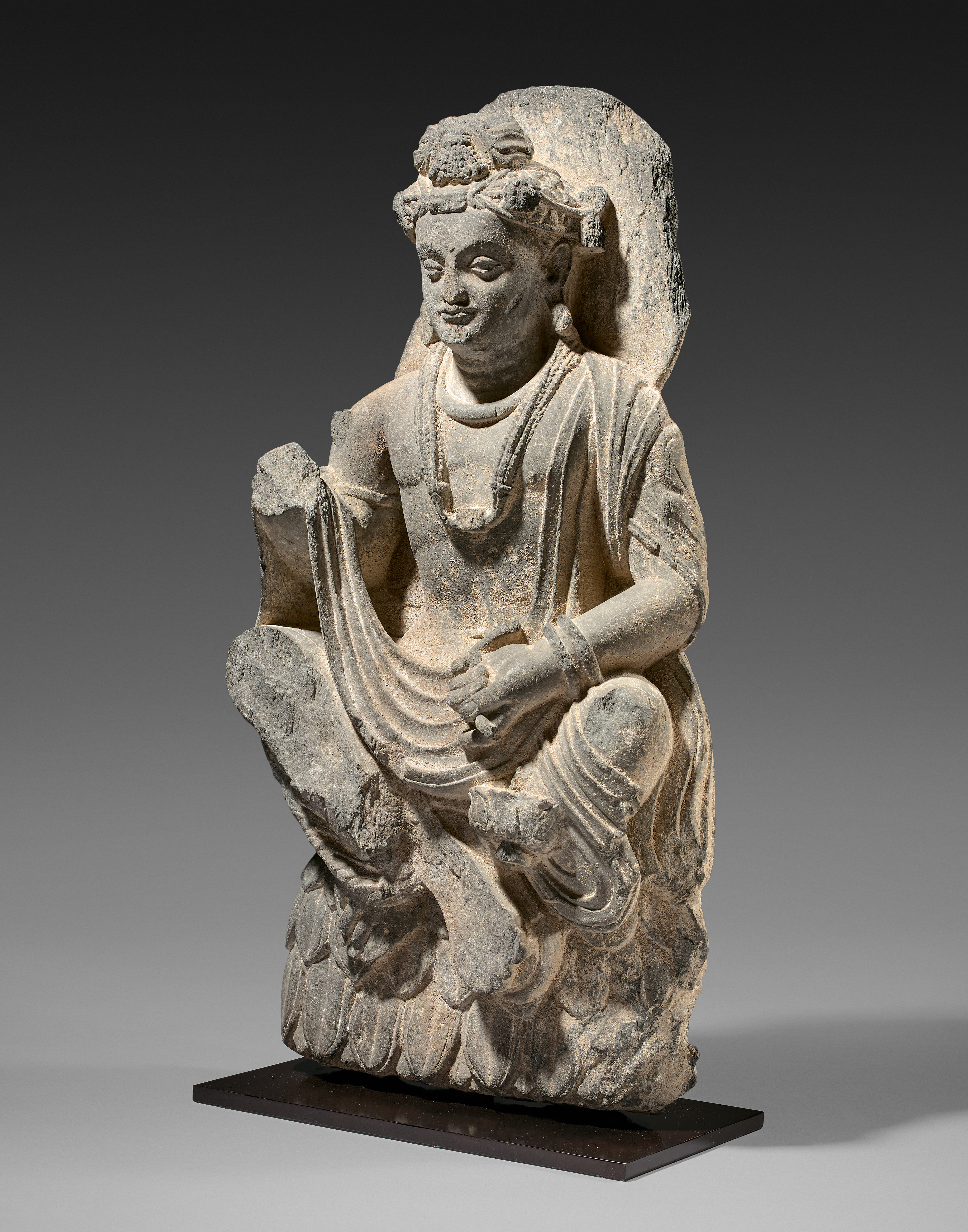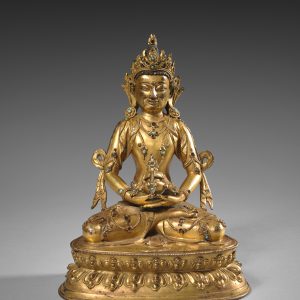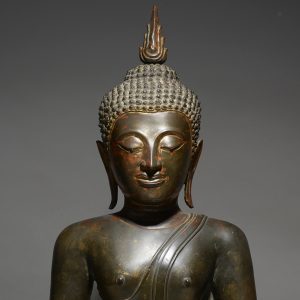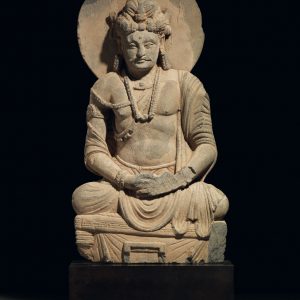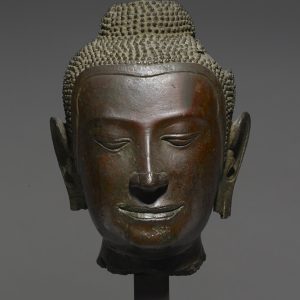Bodhisattva
Schist
Ancient province of Gandhāra
2nd-3rd century
H. 51 cm or 20 in
Description
Beautiful Gandhāran Bodhisattva, made of schist, measuring 51 cm high and dating from the 2nd – 3rd century. The cult of those compassionate beings, who choose to delay their Enlightenment to help all sentient creatures break free the endless cycle of rebirth, is very important in Gandhāra art.
Represented as an Indian prince, bejewelled with necklaces, bracelets, earrings and wearing a rich and complex headdress, Avalokitésvara is figured sitting, the ankles crossed, in a variant of the attitude called “pralambapādāsana”. This attested but uncommon iconography gives an aspect of lightness and dynamism to the sculpture. With his left hand nonchalantly resting on his knee, he holds a stem: Avalokitésvara is here in his form of Padmapāni, “the one who holds the lotus”.
In terms of style, the very beautiful mix of Indian artistic influences and the Mediterranean world is obvious: the jewels are the magnificent witnesses of the Indian jewelery of the time, while the careful drawing of the muscles and the graceful fluidity of the folds of the garment evoke the canons of Hellenistic art. The lotiform base, composed of three rows of lotus petals, brings an exceptional graphic component.
Provenance: Private collection, UK, since the late 1950s

